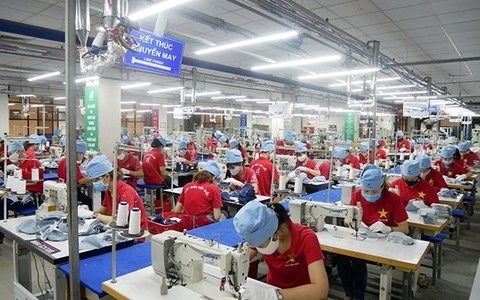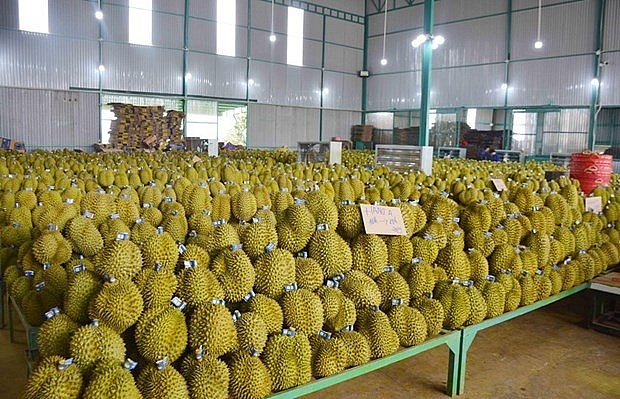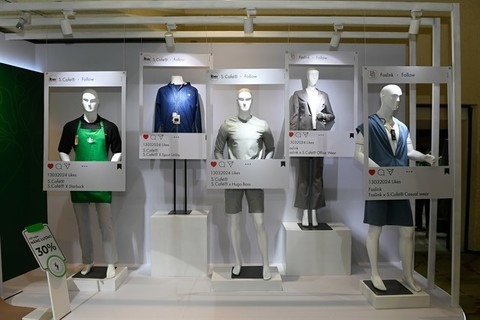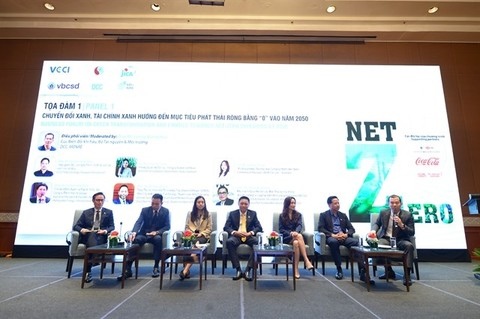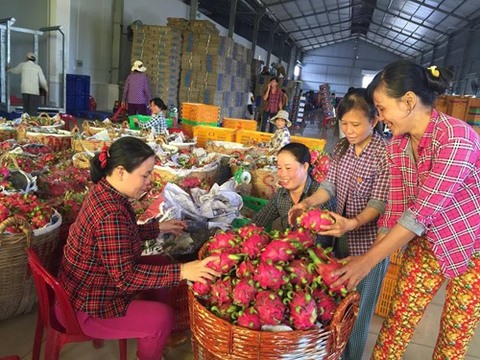Powering Vietnam’s digital transformation
Powering Vietnam’s digital transformation
Accelerating global digitalisation is putting great pressure on Vietnam’s economic development. Cedrik Neike, member of the managing board of Siemens AG, spoke to VIR’s Thanh Tung about this trend and how Siemens can support the country in developing its digital-based economy.
Where will digitalisation take us in the future?
We are only at the dawn of the “Digital Age”. Around 90 per cent of all the data in the world was generated just over the past two years. The Internet of Things (IoT) is growing at a breathtaking speed. Around eight billion devices and machines are connected with the internet today. Forecasts show that number will likely grow to one trillion by 2030.
The digitalisation of society and Industry 4.0 will allow for entirely new functionalities, intensified networking, unprecedented speed, and resource savings – all while satisfying growing customer demand for highly individualised products.
What is Siemens´ answer to this digital transformation?
It´s quite simple. Like we did before with other technological inventions in our company’s history, we want to shape the future – the digital future. Siemens has been radically transforming itself from a hardware-focused company to a software-driven one. With massive investments in
acquisitions of software companies in recent years, Siemens has made a significant push into the software space. Today, we’re one of the world’s largest software companies with more than €5 billion ($5.79 billion) in annual revenue from software and digital services and more than 24,500 software engineers.
We are using digitalisation to open up completely new business models, such as manufacturing with “digital twins”, and we perfectly combine our hardware experience with the software skills. Siemens offers its cloud-based, open IoT operating system MindSphere to the industry to make machines smart, make production lines fast, and prevent equipment failures before they happen. Connected machines upload data to the cloud to be analysed. That’s where data turns into business insights that can increase efficiency and profitability.
What do you see as the challenges facing Vietnam’s manufacturers and how should they address these obstacles through digitalisation?
Reducing time-to-market, greater flexibility requests, and increasing quality at the lowest possible price while being energy-efficient are the main challenges manufacturers face today. Apart from that, they must decide on where to start their digitalisation journey and what to fix first before going any further.
Digitalisation can help manufacturers with their complete value chain, starting from product design, production planning, product engineering, to product manufacturing and, finally, operational services. Siemens offers a holistic approach to the integration of manufacturers’ value chains. We are currently the only technology provider to have a thorough product portfolio addressing all five value chain steps of a digital enterprise: product design, production planning, engineering,
execution, and services. We go beyond our role as a product or system provider to being a consultant that provides additional advice to manufacturers on how to customise and tailor an ideal, digitalised road map.
Vietnam is also facing many challenges as a result of rapid urbanisation nationwide. Many cities, such as Hanoi and Ho Chi Minh City, are struggling to cope with overstretched infrastructure. In your opinion, what are the prerequisites for these cities to become smart cities?
I would say digital infrastructure, smart mobility, smart grid, and smart buildings. Digitally enabled infrastructure, based on a foundation of electrification and automation, can drive efficiencies in services through optimisation of operations and equipment, changing operational patterns based on demand, and managing and maintaining the systems remotely. Mobility solutions increase the availability of infrastructure, optimise throughput, and create a new quality of passenger experience through digitalisation. For instance, the digital railway provides a new opportunity for cities and train operators to run railways that are interactive and self-managing, and at the same time provides passengers with new levels of connectivity in addition to convenience and comfort. The smart grid provides an optimised balance of generation and demand, helping to reduce the overall consumption of electricity across the development by directly regulating devices or influencing consumer behaviour.
Smart building technology will help cities achieve the highest standards of environmental efficiency and reduce energy demands.
It is said that Siemens has a unique digital offering for the infrastructure needs of a city. Could you elaborate?
According to predictions, nearly 70 per cent of the global population will be living in cities by 2050. We believe cities can solve their challenges by using smart urban and digital technology. However, cities often struggle to turn the ever-greater amounts of data into valuable insights. High upfront costs, a lack of skills, or a lack of common data standards make it difficult to analyse big data in real time to derive actionable information that will drive decisions. Here, Siemens’ open IoT
operating system MindSphere comes into play again. It enables powerful city applications and digital services to further develop the infrastructure.
Valuable city-specific applications built on MindSphere deliver measurable results and enable digital services that are based on best-practice solutions. In addition, cities can leverage MindSphere to seamlessly integrate data throughout the infrastructure, not only driving operational efficiency, but also comparing simulation and test results with real-world observations.
What can Siemens do to support cities in Vietnam specifically?
We are working directly with cities worldwide to ensure that digital technologies are integrated into
planning so they deliver benefits immediately by reducing congestion, improving air quality, and increasing energy reliability.
In Vietnam, we are working with the Ministry of Transport and the city governments of Hanoi, Ho Chi Minh City, and Danang to make transportation more efficient by implementing intelligent traffic lights and traffic management systems to regulate the flow of traffic. Last month, we signed an important memorandum of understanding with Hanoi to promote co-operation in intelligent traffic systems.
We believe that a widely deployed public transportation system will be the key factor to making cities more liveable and more competitive. Our metro solutions are available to support cities such as Hanoi and Ho Chi Minh City in doing this.
Last but not least we are working with Vinfast on their automobile manufacturing project. The electric vehicles from their production are manufactured with the support of Siemens technology.
Siemens has been officially present in Vietnam since 1993, so this year marks its 25th anniversary. What are Siemens’ commitments to the country in the years ahead?
Vietnam is entering a very exciting time and digitalisation is an opportunity for the country to leapfrog into becoming an industrialised nation very soon. Siemens understands Vietnam’s emerging challenges very well and is willing to help by offering our proven competencies in electrification, automation, and digitalisation.
We are at the forefront of digital innovation and we have already developed the relevant solutions for cities – for more efficiency, sustainability, and security. We are highly committed to being the partner of choice for Vietnamese customers, as well as supporting Vietnam in leading the way to digital transformation.


